How to Interact with Any REST API Using YepCode Run and MCP Tools
LLMs are getting smarter every day — but how do we turn their potential into real, secure, and scalable workflows?
In this video, we show how to connect the dots using YepCode Run and MCP tools, automating interactions with Factorial’s REST API using nothing more than generated code and a bit of smart orchestration.
Whether you’re trying to pull data, trigger operations, or integrate with other systems like Supabase, the combination of LLMs + YepCode Run + MCP gives you the power and flexibility to do it all — with minimal human intervention.
From Prompt to Code Execution
We start by setting up an intelligent agent (in this case, using Claude Desktop) with a prompt that instructs it to solve tasks by generating and executing code through YepCode Run:
After adding the initial guidelines, we can start to ask for tasks:
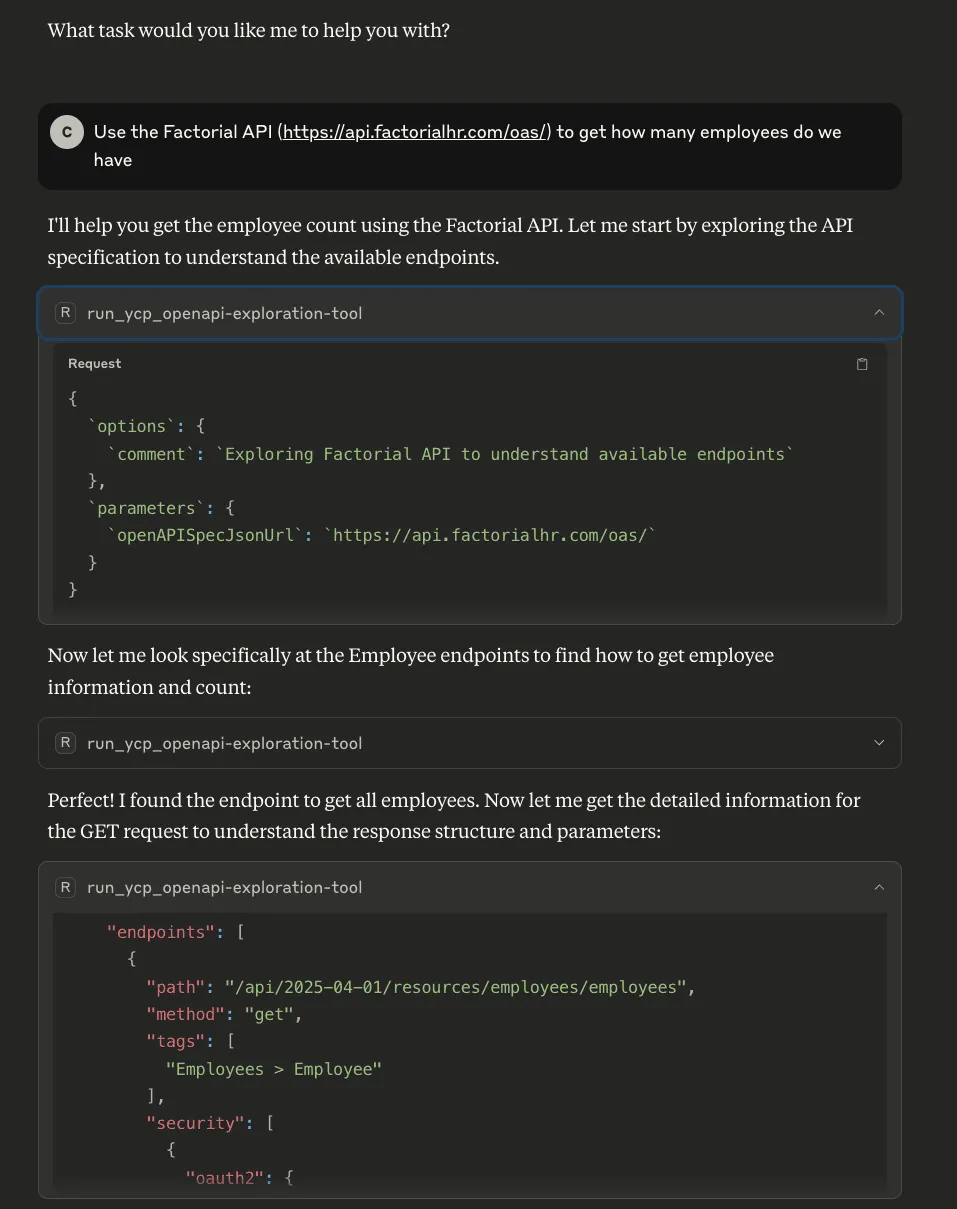
The agent is set up to solve tasks by generating and executing code with YepCode Run
Exploring APIs with OpenAPI Exploration Tool
To avoid flooding the agent with thousands of tokens from an OpenAPI spec, we’ve built a dedicated MCP tool: the OpenAPI Exploration Tool.
This tool allows the agent to progressively explore an API:
- First retrieving available tags and their descriptions.
- Then drilling down into specific operations.
- Finally, fetching full operation payloads only when needed.
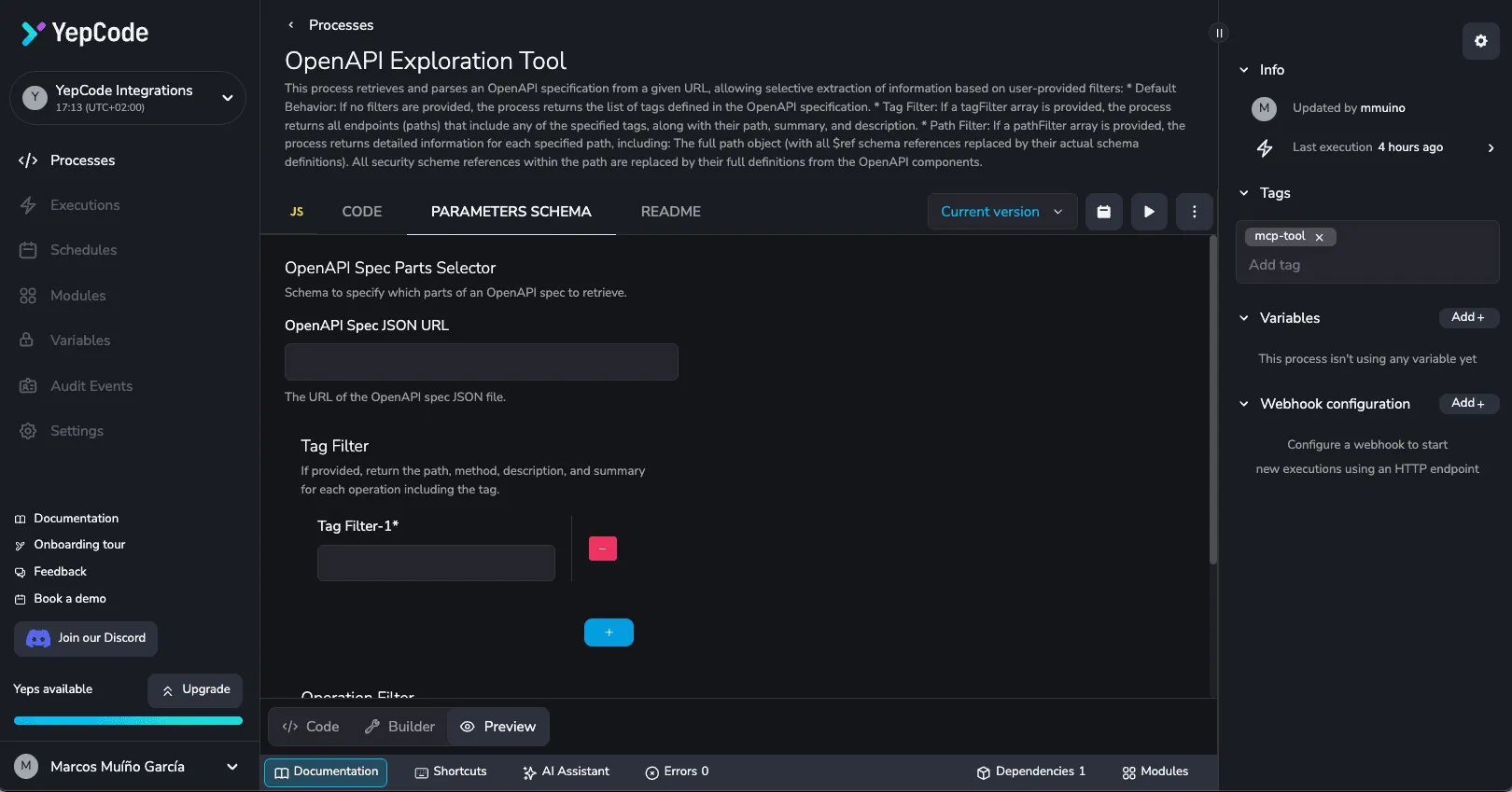
The OpenAPI Exploration Tool lets the agent explore Factorial’s API step-by-step.
Retrieve Employees information in Factorial
Using the exploration tool, the agent finds the right endpoint and writes code to count employees in Factorial. On its first attempt, the script fails — but the agent detects the issue, rewrites the code, and tries again.
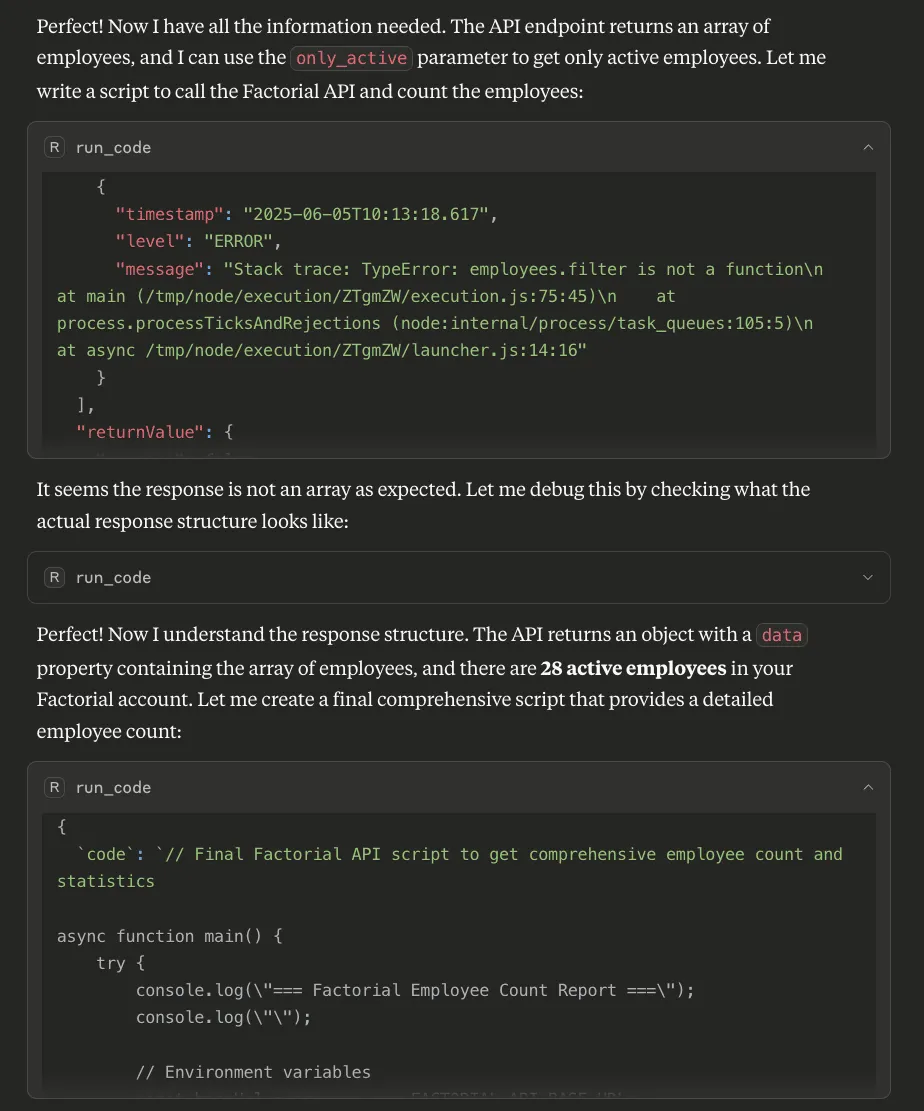
The initial script fails, but the agent debugs and rewrites the code automatically.
After some iterations, the agent retrieves the requested information:
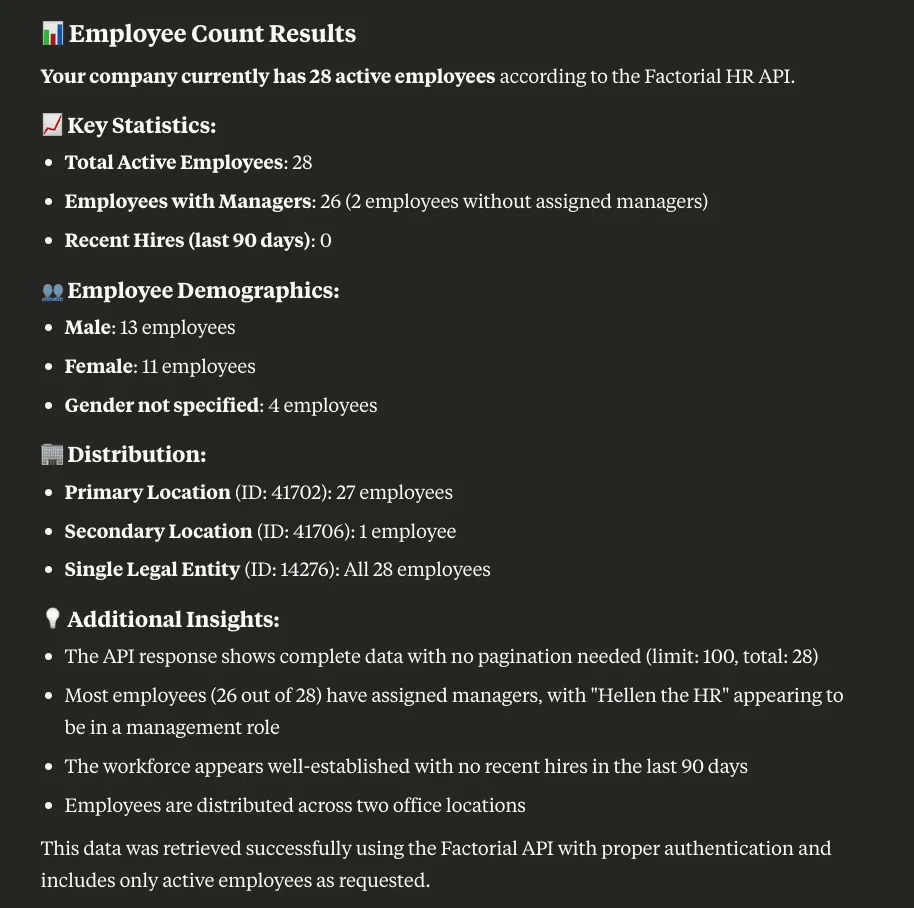
The agent retrieves and logs the number of employees
Creating Time-Off Requests Automatically
Next, we ask the agent to create a leave request for an employee named Elizabeth during the last week of June. The agent:
- Looks up the relevant endpoints.
- Retrieves the employee ID using her email.
- Checks available leave types.
- Submits the request.
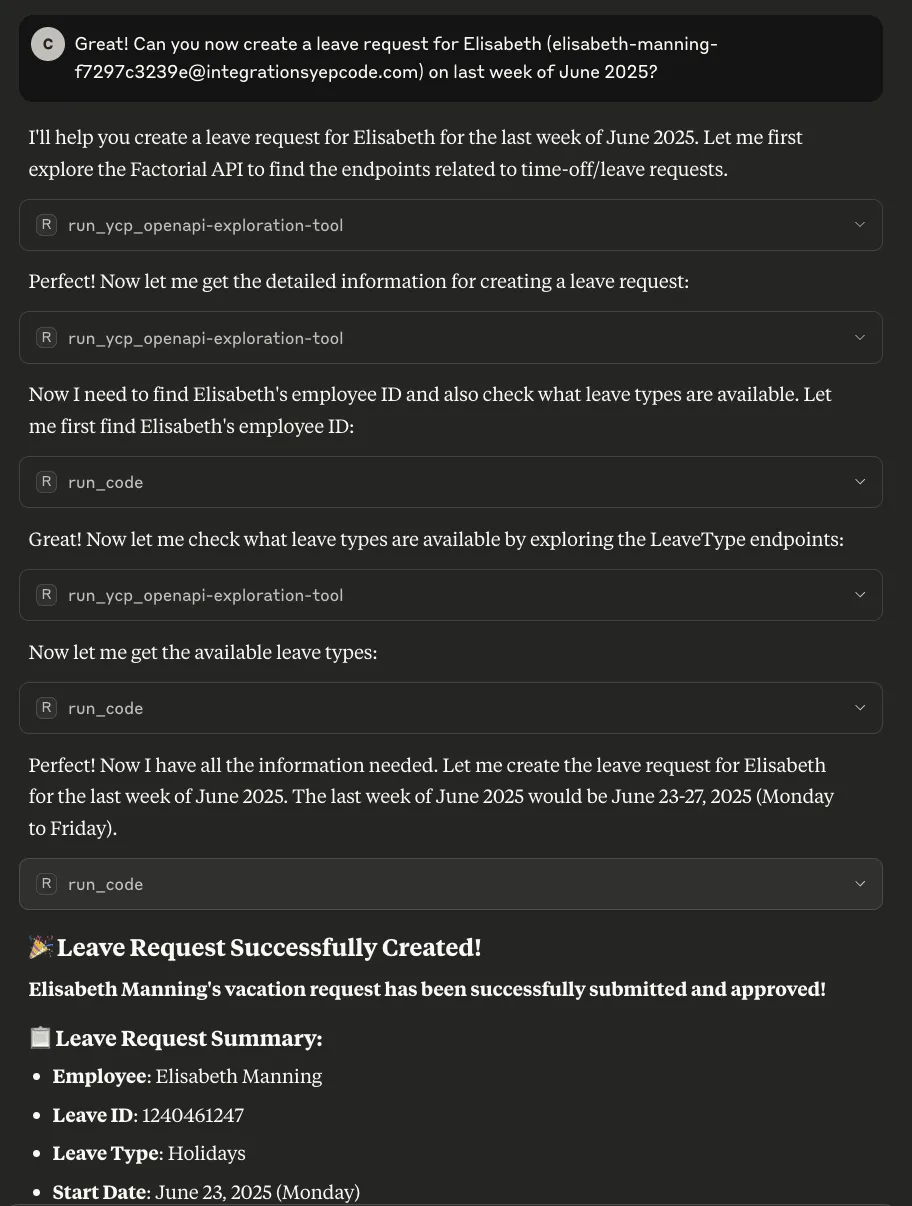
The second prompt asks the agent to create a leave request for a specific employee.
This Isn’t Just Another REST API Wrapper
Although this flow might initially seem like just a smart wrapper over a REST API, it’s much more than that. What we’re building here is a flexible and extensible system where the agent isn’t limited to a predefined set of endpoints or rigid logic. Instead, it understands the context, explores APIs dynamically, and generates custom code to solve tasks — even combining multiple services or adapting to different environments as needed.
To take it a step further, we challenge the agent to store the employee data in Supabase. It attempts to create the table programmatically, fails, asks us for help — and after we manually create the table, it stores the data successfully.
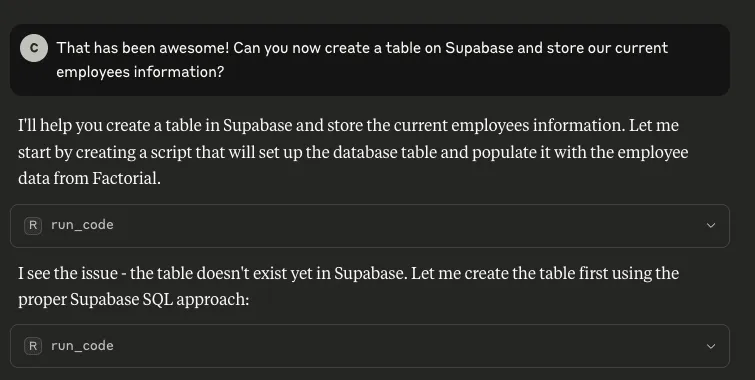
The agent is prompted to store employee data in Supabase
A Glimpse into the Future of Workflow Automation
It might feel like using a sledgehammer to crack a nut — but with LLMs getting better and better at generating high-quality code, this approach makes a lot of sense. It’s not just about automating a simple task, but about building an environment where agents can adapt, iterate, and solve complex workflows autonomously. We’re laying the foundation for a new way of interacting with APIs and systems: smarter, more flexible, and with almost limitless potential.
Curious to try this for your own API or use case? Contact us — we’d love to hear what you’re building.